Modern crematoriums use large specially-designed cremators that have been designed for cremations. The cremation process, on average, takes between two and three hours to complete.
At Distinct Cremations, we handle every step of the cremation process, whether it's an attended cremation or a direct cremation, with the utmost care and respect:
Each crematorium ensures proper identification of the deceased takes place, that all the necessary paperwork has been completed and that your loved one is handled with respect throughout their time in our care.
The first step in the process is to identify the deceased.
After the deceased has had their identity confirmed, a unique identity tag is secured around their ankle or wrist which allows the funeral team to ensure the correct person is cremated and the ashes are looked after according to the family's wishes.
Before the cremation, the deceased is carefully prepared. This process ensures the cremation proceeds safely and respectfully, and can vary depending on individual or family wishes. Below are the key steps involved:
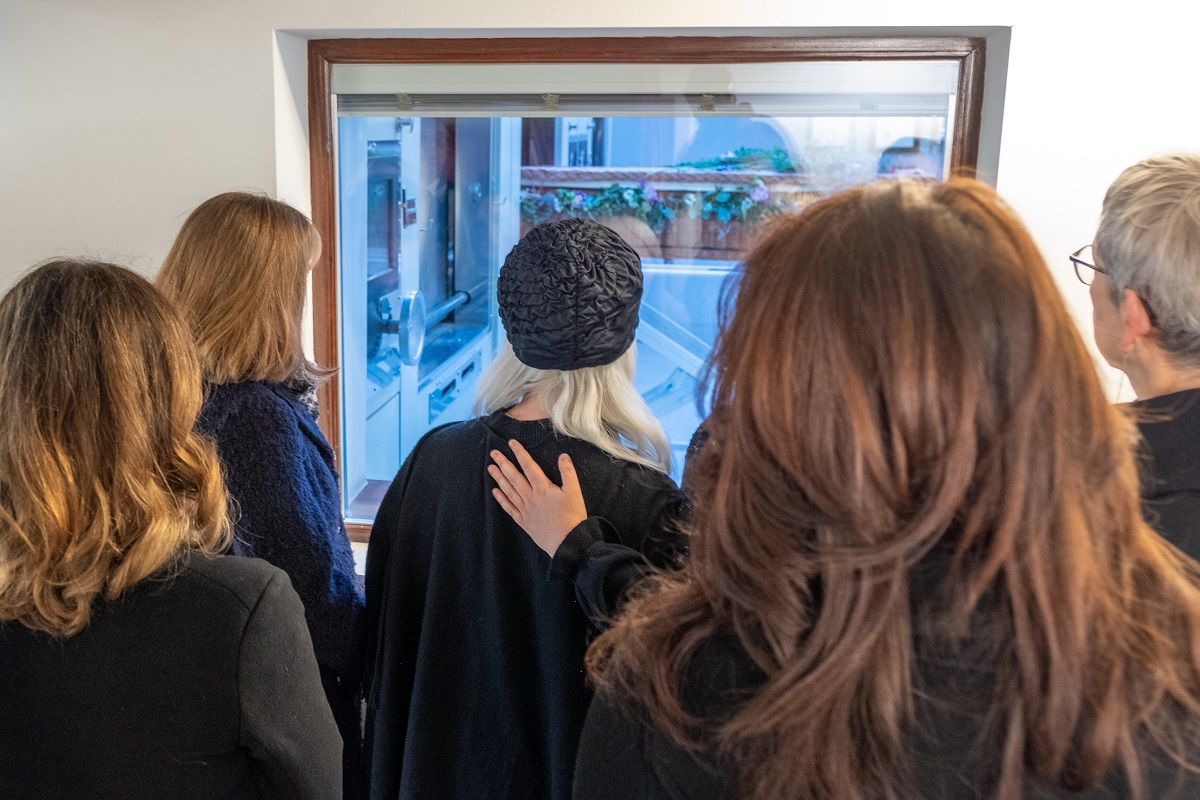
Unlike burials, embalming is rarely necessary for cremations, so at Distinct Cremations we introduce no additional chemicals to the body. This approach allows for a more environmentally conscious farewell while ensuring your loved one is treated with the utmost respect.
At Distinct Cremations, we take great care to honour your wishes, ensuring that every detail of the preparation is carried out with dignity and compassion.
After the deceased has been prepared with care and respect, the next step is the cremation. This process is designed to ensure dignity at every stage, from the moment the body is transported to the crematorium to the final collection of ashes. Each step is handled with the utmost respect, ensuring that your loved one is cared for throughout.
Transport to the crematorium
Once the body has been prepared and placed in their coffin, the deceased is respectfully transported to the crematorium. Depending on your wishes, the cremation may take place in the crematorium without a funeral like in the image to the right, or the coffin can be placed in the crematorium’s chapel for a funeral service before cremation begins. This ensures a respectful journey from preparation to the final farewell.
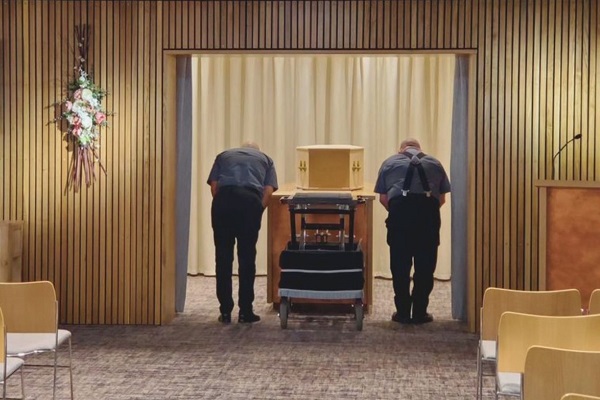
The cremation process
After the funeral service, or when ready for cremation, the coffin is moved to the main cremation area. The coffin, with the body inside, is then placed into a specialist cremator. The deceased remains in their coffin throughout the entire process and is never exposed directly to the flames. The cremator's heat gradually reduces the coffin to ashes over a period of about 2-3 hours.
Read our what happens at a crematon for more detailed information about the cremation process.
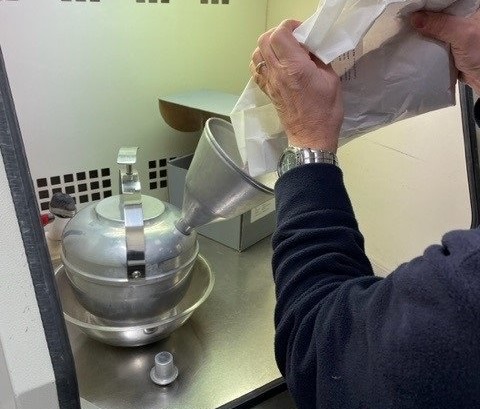
When the cremation is complete and the ashes of the deceased have cooled down, they’re collected by a cremation assistant and checked over.
At this point, any impurities are then removed before being transferred to a machine called a cremulator which refines the cremated remains into the fine powder we recognise as ashes.
When completed, the deceased’s ashes are carefully placed into a labelled container, ready for collection or scattering by the crematorium staff.
Throughout this process, strict protocols are followed to ensure that the ashes are correctly identified and treated with the utmost care. From the moment the cremation begins until the ashes are ready for collection, the focus is always on maintaining respect and dignity for your loved one.
The final step in the process is to either have your loved one’s ashes returned to you or have their ashes scattered in one of our gardens of remembrance by the crematorium staff. This option provides a serene and peaceful resting place for those who wish to leave their loved one in a dedicated space of reflection.
If you choose to have the ashes returned to you, there are many meaningful ways to honour them. You may decide to keep the ashes in an urn or ashes container at home, where they can be placed somewhere special. Alternatively, you can scatter the ashes in a location that holds sentimental value - whether it's a favourite place of the deceased, a family garden, or another meaningful spot.
This final act can be a deeply personal way to say goodbye, giving you the freedom to create a lasting tribute.
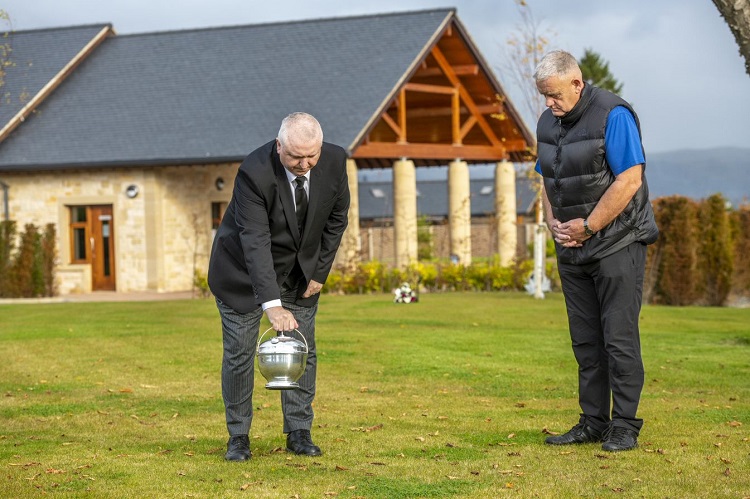
We compassionately deliver first-class attended cremation services or direct cremations. Direct cremation offers a simple, unattended funeral. If you’re planning ahead, we also offer funeral plans including direct cremation plans.
View our low cost funeral services below. Alternatively, you can view our price list or our CMA standardised price list for a breakdown of costs.
If your loved one has passed away or is in the final stages of life, our team is here 24/7 to assist you. We provide guidance and support for every step, including the collection and care of your loved one, handling all necessary paperwork, and overseeing the funeral day itself.
Gain peace of mind with pre-arranged and prepaid funeral plans for future arrangements. We ensure guaranteed acceptance with no medical questions.
* Price advertised is for a 50 year old paying over a 10 year period. Total cost is £2,374.80 and includes administration fees.
How is the body dressed for cremation?
At Distinct Cremations, we treat every individual with care and respect throughout the entire process. Before the cremation, the body is washed and cleaned. Your loved one can either be dressed in their own clothes or in a simple and dignified robe that we will provide. This choice is entirely up to the family, and we are here to accommodate your wishes.
Is the coffin burnt with the body during cremation?
Yes, during the cremation process, the coffin is cremated alongside the body. The coffin is fully combustible and designed specifically for cremation. It remains sealed throughout the process, and the deceased is never exposed directly to the flames. By keeping the coffin intact, we ensure that your loved one is treated with respect, and the cremation proceeds safely and with dignity.
How long does it take to cremate the body?
The cremation process typically takes between 2 to 3 hours. This time allows for the body and coffin to be fully reduced to ashes through the high heat generated in the cremator. Once the cremation is complete, the ashes are carefully collected, refined, and placed in an ashes container or urn of your choosing.
Discover a wealth of helpful articles, checklists and funeral guidance from our experts, to support you and your loved ones.
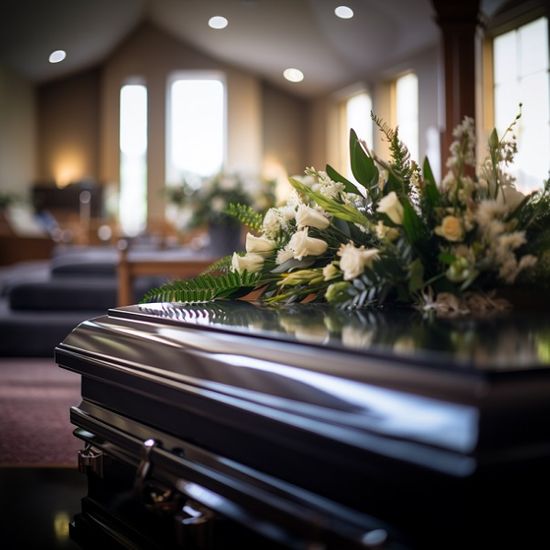
With over 30 years of experience behind us helping to provide exemplary funeral care to families across the UK, we’ve learned a thing or two about what happens at a cremation.
How long does a cremation take?
Unlike traditional funerals, cremations without funeral services have no funeral procession, flowers or cars and no attendance of mourners at the crematorium itself.
Cremation without a funeral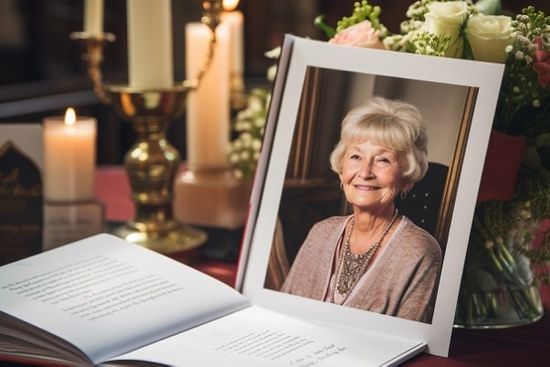
Many of us are familiar with the idea of cremation, but for those who’ve never attended a cremation service, the question of what happens at a cremation still remains.
The cremation process explainedWe offer the highest level of support, but don't just take our word for it. Below are recent reviews from customers who bought a funeral with us.





